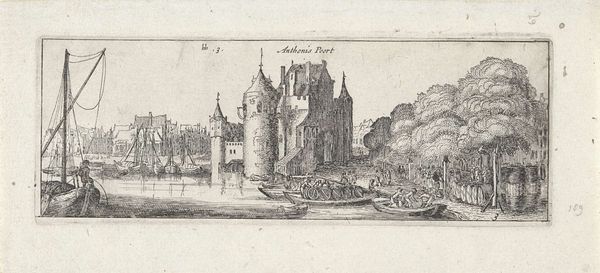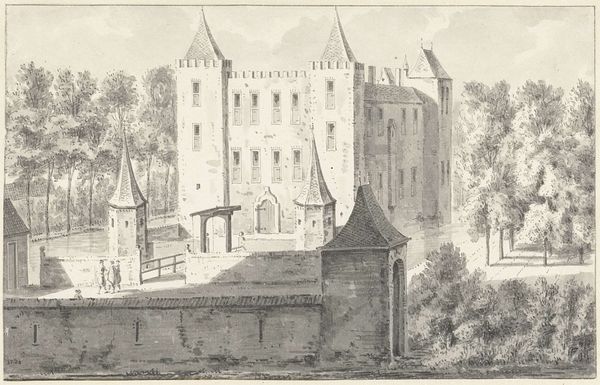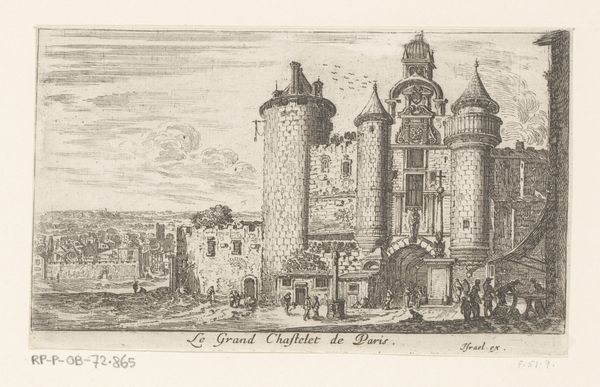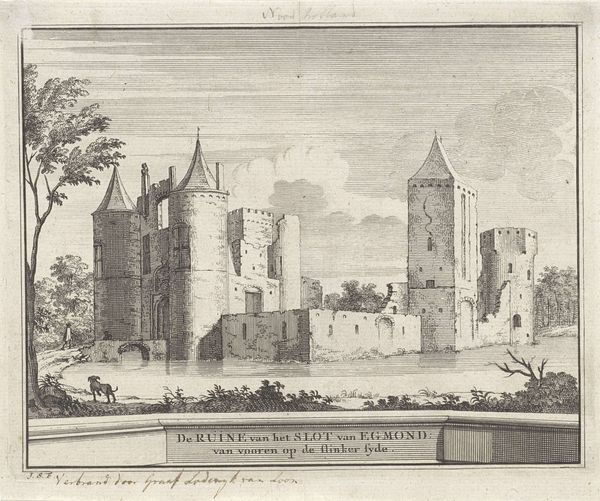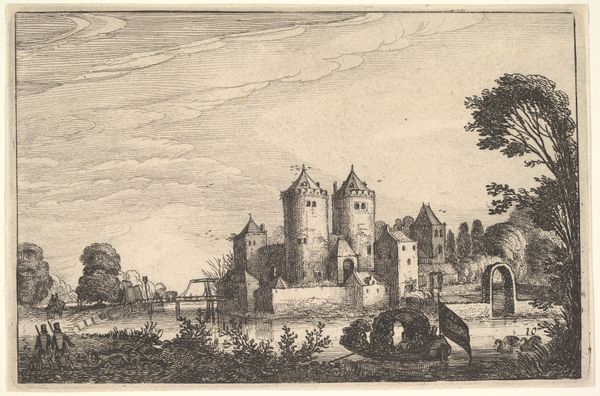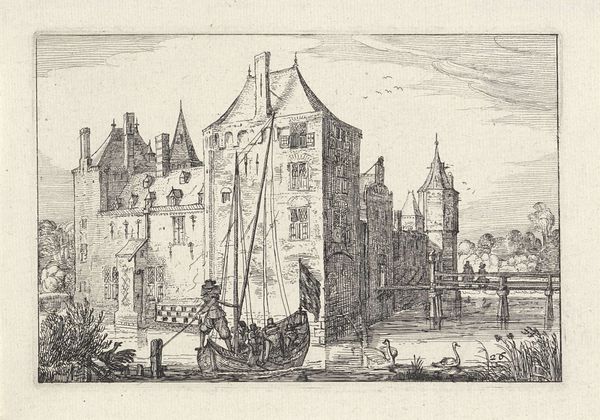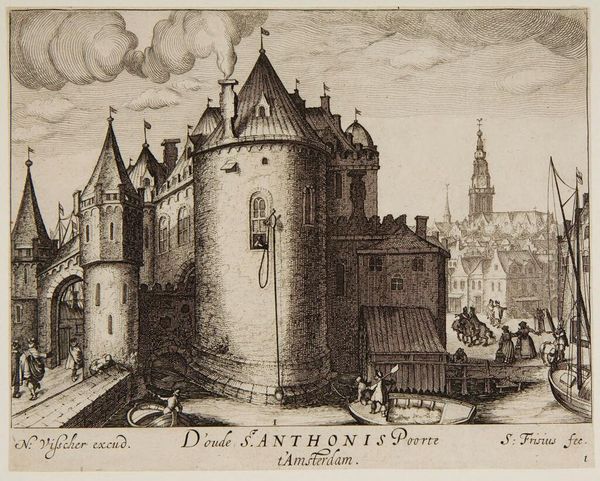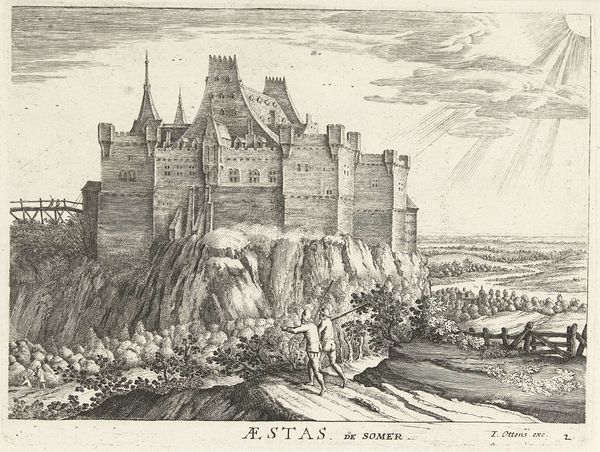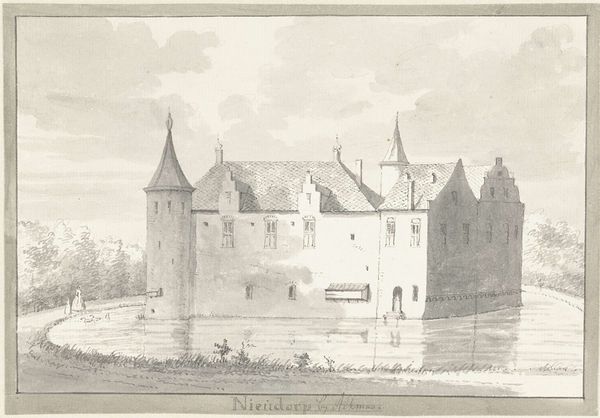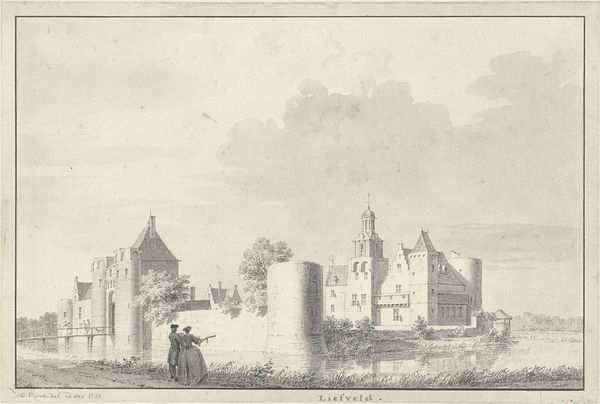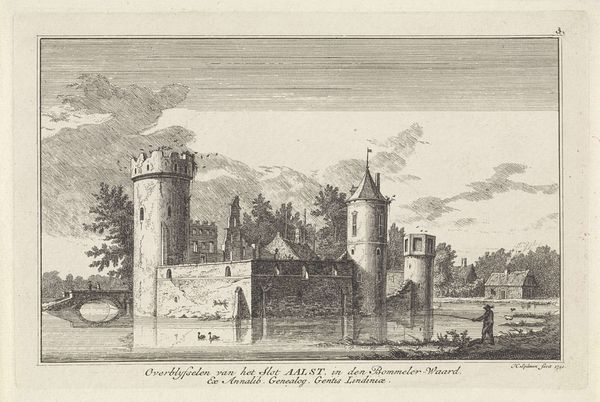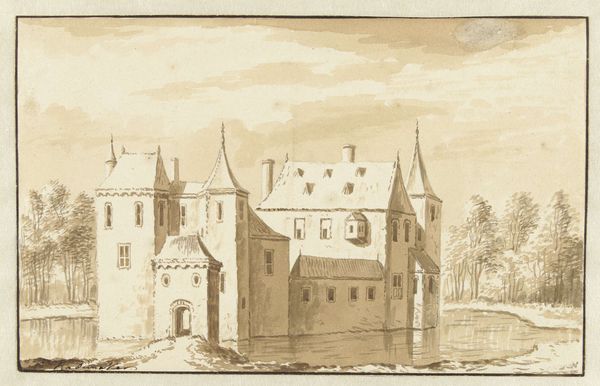
print, engraving, architecture
#
dutch-golden-age
# print
#
old engraving style
#
landscape
#
cityscape
#
engraving
#
architecture
Dimensions: height 130 mm, width 201 mm
Copyright: Rijks Museum: Open Domain
Editor: Here we have "Gezicht op het Muiderslot," or "View of Muiderslot," an engraving from 1617 by Claes Jansz. Visscher, housed in the Rijksmuseum. I'm struck by the starkness of the composition. It’s all lines and details, giving it a very formal, almost architectural feel. What do you see when you look at this print? Curator: Indeed. Focusing on the formal qualities, the dominance of vertical and horizontal lines immediately catches the eye. The strong verticals of the castle towers and the reflection of those lines in the water create a sense of stability and imposing grandeur. The use of hatching and cross-hatching defines form and provides a tonal range. Notice how Visscher uses the density of lines to model the forms and create depth, drawing our attention to the complex texture of the stone. The formal qualities evoke a clear aesthetic. Are there any other formal relationships that you observe? Editor: I'm seeing a pattern here, and the way he uses the technique makes a kind of formal argument about control and order. I notice the artist makes some sort of argument using form and balance in relation to control versus chaos? I mean, given what I think of castle life, does the formal element of the landscape mirror the idea of that social system? Curator: Precisely. The artist uses form to reinforce these ideologies. Look at how the trees, which could be read as chaotic or wild, are rigidly framed within the composition and rendered in a very controlled manner. Do you think this engraving truly captures the social systems that would underpin this landscape? Editor: Probably not fully. There’s a distance. But this attention to precise detail also emphasizes the idealized portrayal, doesn’t it? What have we really learned about Dutch values and techniques from examining this engraving? Curator: Through its meticulous linear structure and carefully modulated light and shadow, the print showcases both technical virtuosity and perhaps a statement of order. Editor: Yes! Thinking about those elements separately lets you draw individual, very distinct conclusions! Thanks!
Comments
No comments
Be the first to comment and join the conversation on the ultimate creative platform.
